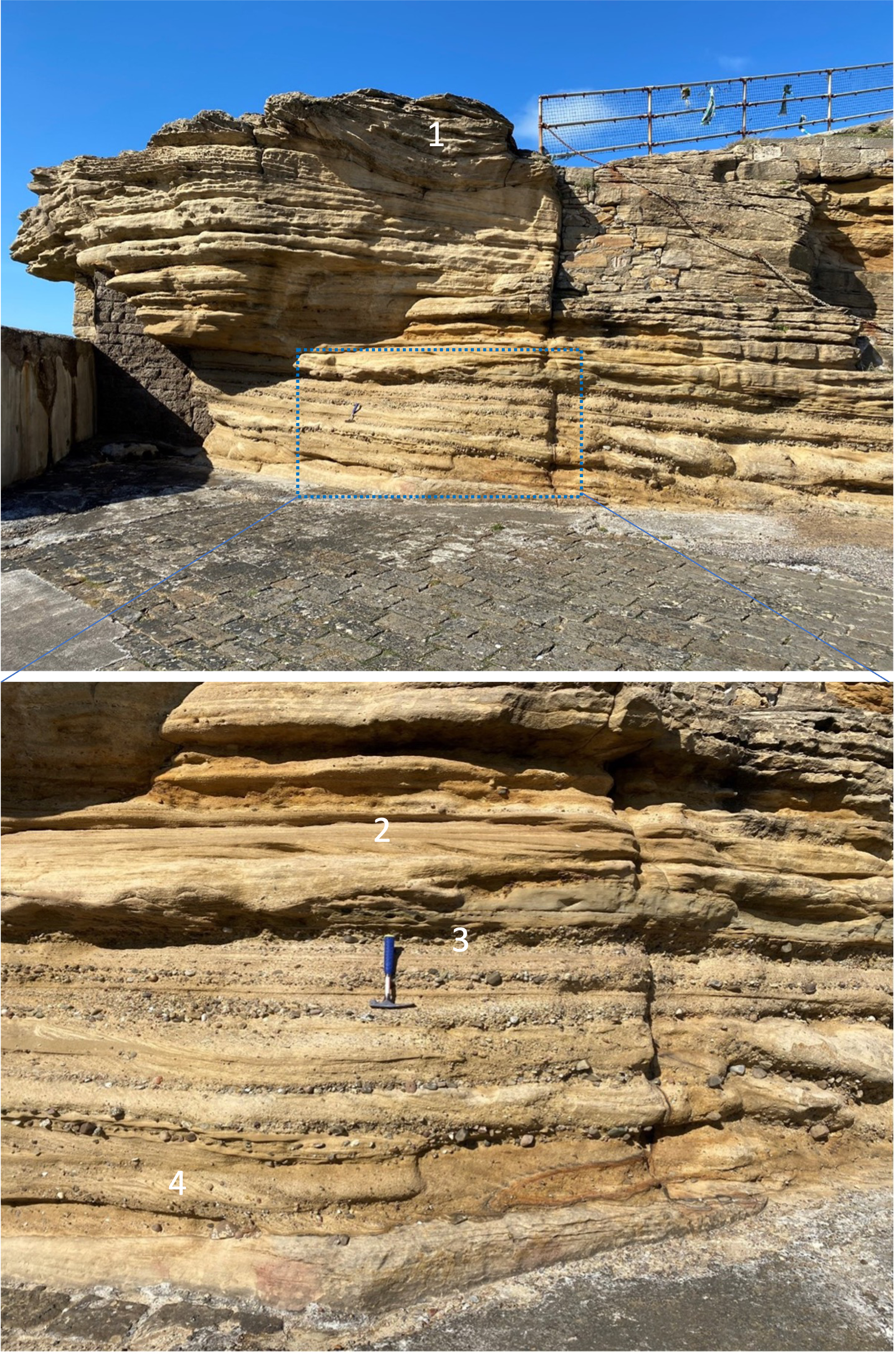Triassic river sandstones, Burghead, Scotland
The Burghead Beds are Triassic age (180 - 220 million year old) sandstones that are very accessible from the Moray Coast Trail…
https://www.morayways.org.uk/routes/the-moray-coast-trail/
The best place to see their main features is on part of the Burghead harbour wall which is a few minutes walk from the small car park at the pictish fort at the end of the village. You reach it by going down the steps (below). We know from this outcrop that these sandstones were deposited by rivers periodically flowing northwards from the Grampian mountains, when the climate was hot and arid. This is because there…
is a small channel at the top (1)
are many pebble layers that need water to move the pebbles (often quartzites)
is small scale cross bedding suggestive of river bedforms such as a point bar
is also horizontal bedding which alternates with the cross bed packages suggesting deposition in a desert environment
The Burghead beds are Triassic age sandstones forming part of the harbour wall just down from the pictish fort visitor centre car park.
The Burghead beds are also exposed along the foreshore where care should be taken on the slippery rocks. There are other exposures along the old railway line - the one below is on the left hand side (walking eastwards towards Hopeman) of the now path at Cummingstown. Here we can see small scale cross beds similar to those at the harbour.
Exposure of the Burghead Beds along the old railway line at Cummingstown. Compass for scale.


